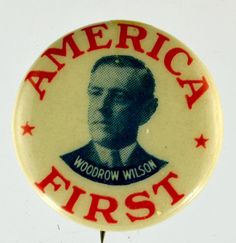100 years ago, in November of 1916, America was also recovering from a controversial Presidential election. Progressive Democrat Woodrow Wilson, PhD, had taken the U.S. presidency in 1912, when the Republican Party had split between incumbent President William Howard Taft and previous President Theodore Roosevelt, the later losing the nomination and taking his voters to a third-party (the Progressive “Bull Moose” party). “Progressive” at the time was a much different term than today, but I digress. Roosevelt outpolled Taft, but lost the popular vote and Electoral College to the professor from New Jersey.
Increasingly concerned about Wilson’s academic peace policy, Roosevelt put his hat back in the Presidential ring in 1916, but at the convention he mended fences with the GOP Establishment and supported compromise candidate Supreme Court Justice Charles Evans Hughes. Among the typical domestic issues, the campaign took place against the backdrop of the Mexican Revolution that had spilled across our Southern border in March of the year, when Pancho Villa attacked the town of Columbus, New Mexico. Villa’s guerrillas killed a dozen U.S. soldiers and lead John J. “Black Jack” Pershing and the U.S. Cavalry on a fool’s errand incursion into the deserts of old Mexico. The Great War in Europe, which was rapidly expanding across Africa and the Middle East, loomed even larger.
The race was close. As was traditional for a sitting President, Wilson relied on surrogates to campaign while Hughes criss-crossed the country hammering the incumbent. Results the evening of November 7th, 1916, indicted a Republican victory. It wasn’t out of the question, since no Democrat had won a second term since Andrew Jackson in 1832. California tipped the vote for the incumbent. The popular vote ended up 49% to 46%, with the Socialist candidate gaining 3%. The Electoral College gave Wilson 277 votes to Hughes’ 254, which was sufficient for re-election.*
In line with public sentiment, Wilson had pursued a negotiated peace and Wilson’s supporters had campaigned on keeping America out of the European conflict. Yet despite his campaign promises, within a month of his March 1917 second inauguration Wilson was asking Congress to declare war.
*Montana also elected Republican Jeannette Rankin as the first woman in the U.S. House of Representatives. She would vote against that declaration of war the next year.
.


 STrib
STrib The Economist
The Economist
Pingback: Declaring That a State of War Exists: 6 April 1917 -JC Shepard(dot)com
Pingback: 2018 Blog Posts in Review -JC Shepard(dot)com